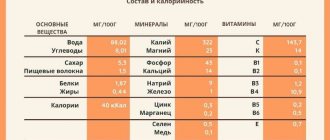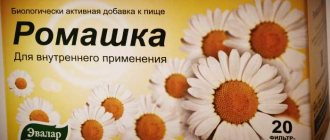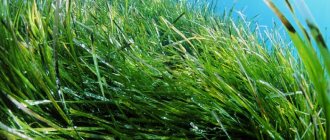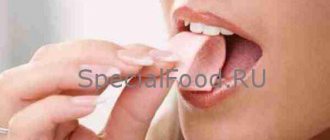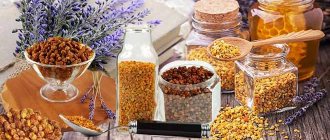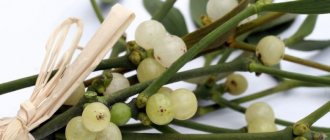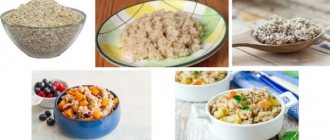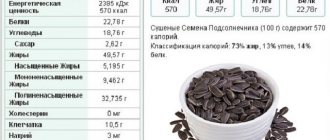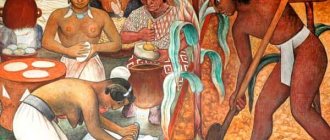Benefits and composition of millet
Millet contains a number of minerals, vitamins, fats, proteins and amino acids necessary for the full development of the body. Amino acids maintain muscle and skin cells in tone, vegetable fats promote the absorption of carotene and various vitamin complexes. Cereals also contain carbohydrates - they cleanse the body of waste and toxins.
Vitamin group B is the most valuable component of millet porridge. Each component of this complex is responsible for its own “section”:
- B1 - with this vitamin you are not afraid of depression;
- B2 - say goodbye to acne and dandruff, get rid of problems associated with bone tissue;
- B6 - when this vitamin combines with calcium, it normalizes the functioning of the heart muscle;
- B9 - hematopoiesis improves, carbohydrate and fat metabolism are normalized;
- PP - has a beneficial effect on the skin and mucous membranes, improves appetite.
Millet porridge contains microelements, the benefits of which are undeniable:
- potassium - helps improve the functions of the cardiovascular system;
- iron - fights anemia and improves blood circulation;
- manganese - normalizes metabolic processes;
- sodium - promotes the activation of enzymes of the salivary and pancreas, accelerates the formation of gastric juice;
- magnesium - suppresses inflammatory processes, increases endurance;
- fluorine and silicon - serve as building materials for hair, teeth, bones and nails, have a beneficial effect on the skin;
- copper - fights wrinkles and age-related skin aging.
Millet contains a huge amount of useful microelements
Calorie content
The calorie content of the product cooked in water, without adding oil, is 342-343 kcal. The calorie content of “golden cereal” allows you to use this product when following a particular diet. The low calorie content of millet cereals eliminates the deposition of fat. In addition, the low calorie content allows you to effectively remove accumulated fat. Nutritionists recommend combining millet with cottage cheese, milk, nuts and pumpkin.
| Unit of measurement | Weight (g) | Kcal (100 g) |
| 1 tsp | 8 | |
| 1 tbsp. | 25 | |
| 1 cup (200 ml) | 220 | |
| 1 glass (faceted 250 ml.) | — | 342 |
The nutritional value
| Macronutrients | Contents (gr.) | % of daily value |
| Squirrels | 11,5 | 25 |
| Saturated fats | — | — |
| Monounsaturated fats | — | — |
| Polyunsaturated fats | — | — |
| Carbohydrates | 66,5 | 27 |
Content of vitamins and minerals
Millet contains vitamins A, B and D. More than sixty percent of the product is carbohydrates. The “golden grain” also contains much-needed fiber for the body. In terms of the content of useful components, the product is second only to oatmeal and buckwheat.
| Vitamins | Content (mg) | % of daily value |
| RR | 1,6 | 23 |
| E | 2,6 | 2 |
| Beta carotene | 00,2 | 0,4 |
| A (RE) | 3 | 0,3 |
| B1 (thiamine) | 0,42 | 28 |
| B2 (riboflavin) | 0,04 | 2,2 |
| B6 (pyridoxine) | 0,52 | 26 |
| B9 (folic) | 40 | 10 |
| E (TE) | 0,3 | 2 |
| PP (niacin equivalent) | 4,6 | — |
| Minerals | Content (mg) | % of daily value |
| Iron | 27 | 15 |
| Zinc | 1,68 | 14 |
| Iodine | 4,5 | 3 |
| Copper | 370 | 37 |
| Manganese | 0,93 | 46,5 |
| Chromium | 2,4 | 4,8 |
| Fluorine | 28 | 0,7 |
| Molybdenum | 18,5 | 26,4 |
| Cobalt | 8,3 | 83 |
| Aluminum | 100 | — |
| Nickel | 8,8 | — |
| Tin | 9,8 | — |
| Titanium | 20 | — |
Millet has many beneficial properties and contains many essential vitamins and minerals. By including this porridge in your diet, you can strengthen your immune system and take care of your body as a whole.
Chemical composition of millet (millet)
The product we are studying has very significant advantages. It contains vitamins such as phylloquinone (K), riboflavin (B2), niacin (PP or B3), choline (B4), thiamine (B1), beta-carotene (A), folic acid (B9), and pantothenic acid acids, pantothenic acid (B5).
Important: millet contains a unique substance – biotin. 100 grams of product contains about 30% of the daily requirement of the substance.
The cereal contains proteins, amino acids, valine, proline, isoleucine, leucine and glutamic acid. Millet provides the body with the daily requirement of Omega-3, phytosterol and linoleic acid, which are classified as polyunsaturated fats.
The cereal also includes:
- vanadium, nickel, silicon, boron;
- rubidium, copper, manganese, cobalt;
- potassium, chromium, strontium, selenium, zinc, zirconium;
- cereal contains starch, carbohydrates, fats, pectin, fiber and sucrose.
Contraindications to the use of millet
This cereal is considered the most harmless. It is easily digestible, does not cause allergic reactions, and can be consumed by children and pregnant women, the elderly and those who have weight problems. However, you will have to refrain from consuming millet if you have inflammation of the colon and serious pathologies of the endocrine system. You should limit your consumption of porridge if you have low stomach acidity. Despite the fact that the product is useful for men, abuse of millet can lead to erectile dysfunction.
To lose weight, it is enough to consume one serving of porridge per day in the morning. Excessive use may have the opposite effect. Even though the product contains very little fat, it is still high in carbohydrates. In addition, almost no one eats porridge in its pure form, and a dish supplemented with butter, milk or jam will certainly not benefit the figure.
Contraindications to the use of millet are minimal and largely conditional. When consumed in moderation and properly prepared, millet will not harm your health. This is a universal product that can be useful to everyone, regardless of age and gender.
Calorie content of millet
The calorie content of raw millet is 342 calories. But, when preparing it, the energy value of the finished dish is significantly reduced. And the average calorie content of the finished porridge without oil, and with the addition of fruit, is 118 calories.
Millet is a carbohydrate-containing food product, so its nutritional value is very high. The average nutrient ratios are:
- Carbohydrates - 64 grams.
- Protein - 5.6 grams.
- Fat - 2.2 grams.
The effect of millet on the body
Millet porridge prevents the formation of cholesterol plaques and fat deposits. Millet is a necessary element of the diet of residents of large cities and areas with poor ecology. The components that make up millet remove toxic compounds, toxins and even heavy metal ions from the body. Recently, information has begun to appear that millet is capable of removing antibiotics from the body. Despite the fact that this fact has not yet received scientific confirmation, it would be a good idea for anyone who has taken antibiotics to include millet porridge in their menu.
Millet is an indispensable food for people suffering from diseases of the digestive tract (pancreatitis), liver diseases, diabetes, atherosclerosis, and allergies.
Useful and medicinal properties of millet
In our country, millet is often used as a healthy food for children in kindergartens and schools. And it is right! Continuing the traditions of our ancestors, we maintain the health of the nation in good condition by including only healthy types of products in the menu. So, let's look at the beneficial qualities of cereals:
- Magnesium – necessary for high blood pressure, regulates blood flow. The element also has a beneficial effect on the human psyche and nervous system. It brings calm, stabilizes sleep, eliminates anxiety, restlessness, and evens out the heartbeat.
- The presence of antioxidants helps strengthen the body and its protective functions. Raising the level of immunity, it prevents colds, infections and cancer from developing. For this reason, it must be included in the menu of kindergartens, schools, hospitals and nursing homes.
- Due to dietary fiber, the intestines are cleansed of waste and toxins, and blood vessels are cleared of plaque, which helps reduce the level of bad cholesterol.
- The mild laxative effect regulates peristalsis, the functioning of the gastrointestinal tract, pancreas, liver, and kidneys.
- Porridge and soups with millet must be included in the diet of a person with diabetes. The reason is carbohydrates, which quickly saturate the body.
- Millet porridge is strongly recommended for residents of environmentally disadvantaged regions, as it removes heavy metal particles from the body, cleanses toxins and decay products from dead cells during radiation sickness and chemotherapy.
Important: as a rule, millet porridge with milk should be present in the menu of workers in chemical and oil production, at nuclear and nuclear facilities.
- Antioxidants and a dose of ascorbic acid, selenium and zinc allow using millet to improve the condition of nails, strengthen hair, make the skin velvety, and teeth strong and healthy.
- Porridge will be very useful for people engaged in hard work and athletes after grueling physical exertion.
- Cereals have a diuretic and diaphoretic effect, so they are indicated for swelling, problems with the kidneys and the genitourinary system.
- Porridge with millet is indicated for sedentary behavior to regulate metabolic processes and burn fat.
- B vitamins, zinc are involved in the process of hematopoiesis, and millet porridge does an excellent job of increasing hemoglobin levels in anemia, anemia, and improves coagulation.
- Thanks to thorough cleansing of the body, stagnant processes do not form, dietary fiber negatively affects and removes putrefactive accumulations and bacteria from us. Thus, poisoning, cancer and inflammatory pathologies are prevented.
- Leucine and histidine (amino acids) promote rapid wound healing and bone fusion.
- The cleansing abilities of millet are directly indicated for vascular diseases and for the prevention of atherosclerosis, Alzheimer's disease, and memory loss. Regular consumption improves vision, hearing, and mental abilities.
- Copper strengthens the walls of blood vessels, making them elastic, which protects against perforation and internal bleeding.
Treatment of kidneys with millet using traditional methods
In folk medicine, millet infusion, millet decoction and millet porridge are used to treat kidneys.
- Millet infusion for the treatment of kidneys, cystitis and female diseases . Pour a glass of washed millet into a jar with 3 liters of boiling water, wrap it and leave it for a day. You need to take the white suspension that appears in the jar as a remedy; it removes sand and stones from the kidneys. You can drink liquid as much as you like and at any time. When the infusion is over, the same millet can be poured with boiling water again for a day. It is recommended to replace the millet with a new one if you feel a change in the taste of the infusion;
- Millet infusion for the treatment of inflammation of the kidneys, ureter and bladder. Fill half a three-liter jar with millet, pour boiling water to the top and stir. Leave the wrapped, sealed jar for a day, then strain and take the infusion without restrictions for a week;
- Millet infusion for the treatment of inflammation in the urinary system. Sort out a glass of millet, rinse with cold water, pour into a jar, pour a couple of glasses of warm water, stir thoroughly and drink the resulting whitish drink as often as possible;
- Millet decoction for the treatment of kidney disorders and blockage of the urinary tract. Pour half a glass of washed millet into a liter of boiling water and cook over low heat for 7 minutes. When the decoction has infused a little, take it as often as possible;
- Millet decoction for the treatment of kidneys and cystitis. Rinse two tablespoons of millet, pour two cups of boiling water and bring to a boil on the stove, stirring occasionally. Let the broth brew for a couple of minutes, strain. Dosage regimen: on the first day you need to drink a tablespoon every hour, on the second - three tablespoons every hour, and from the third to the seventh day - half a glass three times a day before meals;
- Treatment of kidneys with millet porridge. Wash the sprouted millet, dry it and cook the porridge as usual, but without salt, sugar and butter. Add cranberries to the porridge before eating. This porridge cleanses the kidneys of sand and mucus, relieves inflammation of the kidneys, and restores the tissues of the urinary tract and kidneys. In addition, it helps strengthen bone tissue and normalize blood pressure.
Millet diet
A diet based on eating millet porridge, cooked without adding milk or other ingredients, for a week can be considered a very effective way to lose weight. It is recommended to eat this porridge five times a day, combined with a drink made from green tea leaves, as well as mineral or regular water.
The advantages of this mono-diet, compared to others, are accessibility and effectiveness (you can lose about ten kilograms in a week). But it cannot be continued for more than a week to avoid exhaustion of the body, and it is better to avoid frequent repetition.
The benefits of millet for weight loss
Millet porridge is an effective tool for body shaping. For weight loss, millet is primarily useful for its cleansing properties and ability to remove excess fluid. If you spend weekly fasting days on millet porridge for a month, you can easily lose 2-4 kilograms. For unloading, porridge should be cooked in water, without salt, sugar or butter. During the fasting day, you can drink water, green or chamomile tea.
A seven-day mono-diet on millet helps speed up the burning of existing fat by stimulating metabolism and slow down the deposition of new “reserves”. For such a diet, millet porridge is cooked according to a special recipe: the cereal is washed, poured with water and boiled for 10-15 minutes, then the water is drained, milk is added and the porridge is cooked in the oven.
For those who find it difficult to follow a mono-diet, doctors recommend combining millet porridge with other products. For breakfast, for example, along with the main course, you can eat natural unsweetened yogurt, an apple or a glass of kefir. For lunch, you can make a delicious soup from millet: cook half a glass of cereal until fully cooked in 1.5 liters of water, then add herbs, chopped 2-3 cloves of garlic, pepper, salt, onions and carrots sautéed in vegetable oil. For dinner, millet porridge can be supplemented with a vegetable salad.
Is millet okay for children?
Someone will decide that this is a stupid question, because from an early age we constantly sat on porridge, including millet. But there are still points that most people do not know about. Let's go over the benefits and contraindications of millet cereals for children together.
- The cereal contains leucine and valine. These amino acids are the first helpers for constipation, which causes hemorrhoids.
- For colds and other, more serious diseases, it is necessary to prepare porridge with milk in order to remove decay products of antibiotics, dead cells, viruses and bacteria from the body.
- Cereals are indicated for children prone to or with diabetes.
The lithotropic properties of millet are very useful for the baby, since:
- Excess fluid is removed, which makes it possible to cope with various types of dropsy.
- Relieves inflammatory processes in the pancreas, liver, and gall bladder.
- Accelerates the healing process for injuries.
- B vitamins calm the child’s nervous system and neutralize his irritability and moodiness.
- Helps increase appetite.
- Participate in the process of hematopoiesis.
You can feed your baby from 8 months of age, regardless of the type of lactation - natural or artificial.
Important: millet very rarely causes an allergic reaction, but you still need to give your baby a small portion the first time. It is better to start with half a teaspoon, if everything is in order, there are no side effects, gradually increase. If the child is bottle-fed, cook with milk; for infants, cook with water.
Rules for preparing baby porridge:
- it should be liquid and boiled;
- feed in the morning;
- gradually increase portions;
- prepare not only porridges, but also soups.
As the child grows, you can add pumpkin, prunes and other products to the millet porridge.
The benefits of millet for the heart and liver
Millet is the best product for the cardiovascular system. Firstly, it contains vitamins necessary to strengthen the heart muscle and increase the elasticity of blood vessels. Secondly, millet lowers cholesterol levels by destroying cholesterol plaques and thus serves as a preventive measure for atherosclerosis. Thirdly, porridge normalizes heart rate and improves blood circulation, so all those who suffer or are susceptible to cardiovascular diseases simply need to eat millet at least periodically.
High-quality cleansing is another invaluable benefit of millet for the body. There is a version that it not only removes waste and toxins, cleanses the intestines, but also binds harmful ions of heavy metals. This is especially necessary for those who live in an area with poor ecology or are treated with antibiotics - the liver will thank you very much for consuming millet. And you will feel much better.
The use of millet in folk medicine
- Diabetes.
Take 1 spoon of millet flour once a week. Prepare flour immediately before use (grind millet cereal in a coffee grinder;
- Conjunctivitis.
Boil a small amount of cereal in water and leave until cool. Use as an eye wash shortly before bedtime. You can also wrap the pulp in gauze and apply it to your eyes;
- Hypertension.
1 tsp Stir millet flour in 300 g of cold water, divide the mixture into 3 parts and drink during the day 20-30 minutes before each meal;
- Pancreatitis.
Pour 1 cup of millet into 2 liters of water and boil until completely softened. Separately, grate pumpkins (1 cup) on a coarse grater, add to the pan and cook for another 10 minutes, lightly salt, add 1 tsp. sunflower oil. The medicinal porridge is ready; During treatment, milk and dairy products should be excluded. This procedure should be carried out within a month. With regular consumption of millet porridge, the concentration of harmful compounds and radionuclides in the body decreases;
- Runny nose. When you have a runny nose, Ukrainian medicine recommends inhaling through your nose the smoke generated after burning millet or millet;
- Bedsores . If you have a patient in the house who lies for a long time, you need to place bags of dry millet under him in order to prevent bedsores. In the old days, bedsore wounds were treated this way. A clean glass was filled 1/3 with very thoroughly washed grain. This clean, wet millet was poured onto a cleaned metal surface. A cast-iron iron was heated red-hot on the fire (some elderly residents in villages still have such irons in our time) and the millet was quickly pressed down. Liquid immediately flowed out of the millet - so they lubricated the wounds from bedsores with it. It was a very effective method;
- Hemorrhoids and prostatitis.
Pour washed millet into a clean 3-liter jar so that it fills 1/3 of the internal volume of the container. Fill the millet with cooled boiled water (settled, without precipitation, preferably from a well) to the top of the jar and place in a cool, dark place for 4 days. Once 4 days have passed, prepare the second jar in the same way. Take 200 g without interruption (drink) 30 minutes before meals 3 times a day. For the course of treatment you need to have 8 kg of millet, but you may need 16 kg;
- Sinusitis and frontal sinusitis.
Pour boiling water over millet, bring to a boil, place on a very warm brick, wrap, steam for 1 hour, and then pour into cotton bags and apply in such a way that the maxillary sinuses warm up. If it is very hot, place a flannel napkin under the bags, and a thick one on top cloth and woolen old scarf. You should heat it until it warms up, and then remove it and tie it or cover the area with a dry scarf. This procedure should be done at night. The same millet can be used repeatedly.
How to cook
Millet porridge can be prepared with water or milk.
If you want to get crumbly porridge, then for 1 glass of cereal you need to take 1.5-2 glasses of water or milk. If you like viscous porridge, take more liquid - 2-2.5 glasses. For “smear porridge” - at least 3 glasses of liquid.
Millet porridge on water. Rinse the cereal thoroughly until the water runs clear. Cover the millet with water and leave overnight. After soaking, millet cooks very quickly. It is enough to cook the millet for 5 minutes, turn off the heat, add salt and spices, cover the pan with a lid and let the porridge brew for 15-20 minutes.
Millet porridge with milk. Boil milk in a thick-bottomed saucepan. Pour well-washed, soaked cereal into milk. Bring to a boil, reduce heat to low, cover and simmer for 5 minutes. Turn off the heat, add salt and sweet spices, such as cinnamon, nutmeg, fennel and cardamom, which promote better digestion of porridge with milk. Cover the porridge with a lid and let it brew for 15-20 minutes. The millet should absorb all the milk and swell.
You can add butter, coconut oil, dried fruits, berries, coconut flakes, nuts, and honey to the finished millet porridge. Stir the porridge and serve.
See recipes for porridge with millet here.
In addition to porridge, millet can be used to prepare soups, casseroles, cutlets, pancakes, pancakes, as well as a filling for pies and stuffing vegetables.

